Galaxy Camera is a valuable device featuring
high sensitivity and good image quality, yet it is a little bulky and weighty.

The
camera looks impressively white.
Despite not being the only Android camera
in the world, Samsung’s model was better built than Nikon S800c. Samsung’s
camera has powerful specs, comparable to the brand’s top smartphone (Galaxy S
III), with 16.3MP sensor and 21x optical zoom.
RRP is $640, a good price in both hi-end segments
of compact cameras and Android 3G mobiles.
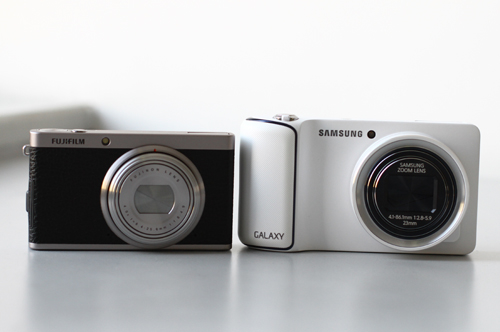
The
model is slightly bigger than most compacts in the market.
Galaxy Camera comes in two color options:
black and white (our test model was white). The device first impressed us with nice
curves like from other mobiles or compacts of Samsung. However, though feeling
sturdy in palm, the model is a bit heavier and bigger than most compact models
in the market. The camera weighs 300g and seizes 128.7x70.8x19.1mm.
The chassis was totally plastic-made, with
a soft rubber layer covering a part for easy handling. Though, due to this white
rubber finish, after few-day use, it got dirty caused by hand sweat and needed
cleaning. Because of having a large screen and 21x optical zoom, this model appears
quite thick even when the lens has been withdrawn.

Physical
buttons are streamlined
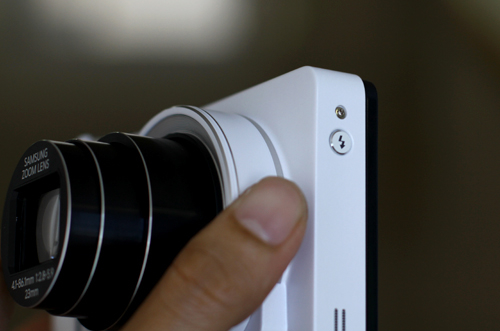
Button
for pop-up flash
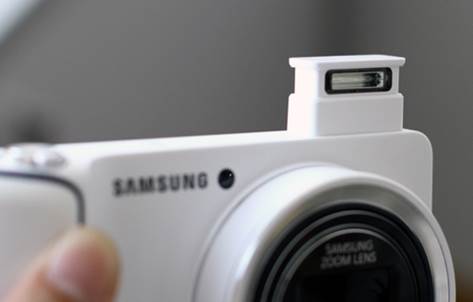
Flash
is pulled out
Galaxy Camera’s buttons are mainstreamed. The
device only includes one physical button (screen on/off), capture button (held
in any interface to call out shooting app) and zoom ring (working like volume
keys in Android mobiles). Other editors are completely controlled via
touchscreen featuring a lens-ring lookalike interface. On the edge there’s
another button only for pop-up flash.
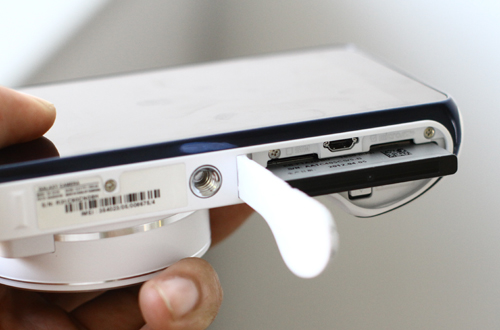
In
the bottom lies battery slot, SIM tray, micro-SD slot and micro-HDMI slot.
Like a common smartphone, Galaxy Camera has
one micro-USB connector allowing for backing up images from internal storage
and memory card as well as charging. Meanwhile, slots of battery, memory card
and SIM are all placed in the bottom of the camera. Differently, Samsung uses
micro-SD card instead of SD card, unlike most travel compacts do. The camera is
also integrated with a micro-HDMI port covered by a rubber flap. This port can
be opened by flipping the flap without opening either flaps of battery or
memory card. Besides, there’s one 3.5mm jack, turning the device into a real
entertainment center.
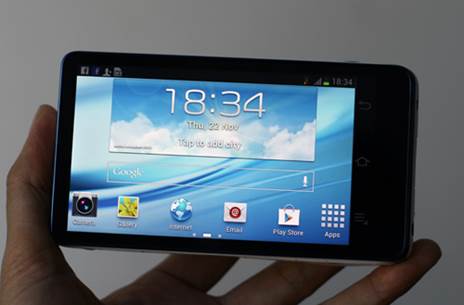
The
display delivers quite clear and accurate colors.
Galaxy Camera’s most powerful point is the
screen beating those from any travel compacts. It seizes 4.8in and obtains HD
resolution for sharp display and wide viewing-angle. It even enables user to
feel clear and accurate colors, rather than Galaxy S III smartphone sharing the
same specs. Response time and accuracy are also like from S III. However, should
it be said that Galaxy Camera’s screen would be a little smaller to make things
easier, from one-hand use to putting the device in a small pocket.
Experience on Galaxy Camera is not much
different than from a common Android smartphone, with large touchscreen plus 3 onscreen
touch-sensitive buttons (like those in Nexus). The product can install and run
most Android apps. Though, calling app, such as Viber, Whatsapp… cannot be
installed directly from app store yet they can be installed by copying
installation files into the device. Strong-required games can be run well
thanks to that the device share powerful specs with Galaxy S III. Thanks to Android,
Galaxy Camera is surely superior to other compact models in term of effects
that are various and available on Google Play from Instagram, Camera 360, and
Camera+…
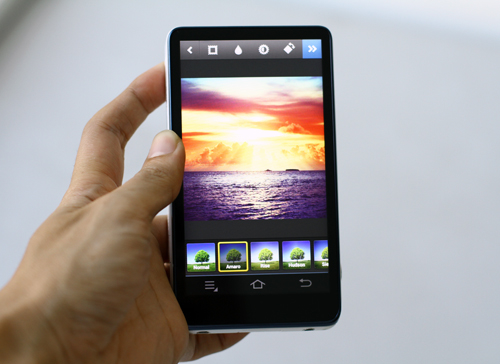
The
camera is run on Android OS.
Especially, Galaxy Camera user is provided
with 48GB free storage on Dropbox. When installing, the device syncs all data
with cloud through Dropbox while keeping original files in the camera. This is
such an interesting feature but as each image owns large size and user will get
used to shooting a lot, it will be difficult to upload files through 3G or
Wi-Fi.
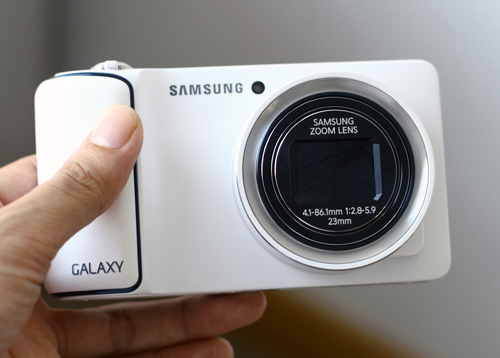
The
grip is coated with a rubber finished yet it easily gets dirt.
The camera’s battery capacity is 1,650mAh,
quite small in accordance with the 4.8in screen size whilst it is, on paper, more
power-consuming as shooting process requires more power for sensor and zooming
engine. Samsung said the camera could deal with 370 shots per charge. However, practical
runtime was not as stated because most of the time we left the device in
standby mode for quick resumption. Meanwhile, the product can be used for
various purposes: web-browsing, gaming, music-playing, mail syncing… in medium
use including shooting 100 pictures, 2-hour browsing, 1-hour gaming and the
rest in standby, the camera could last for around 1 day.